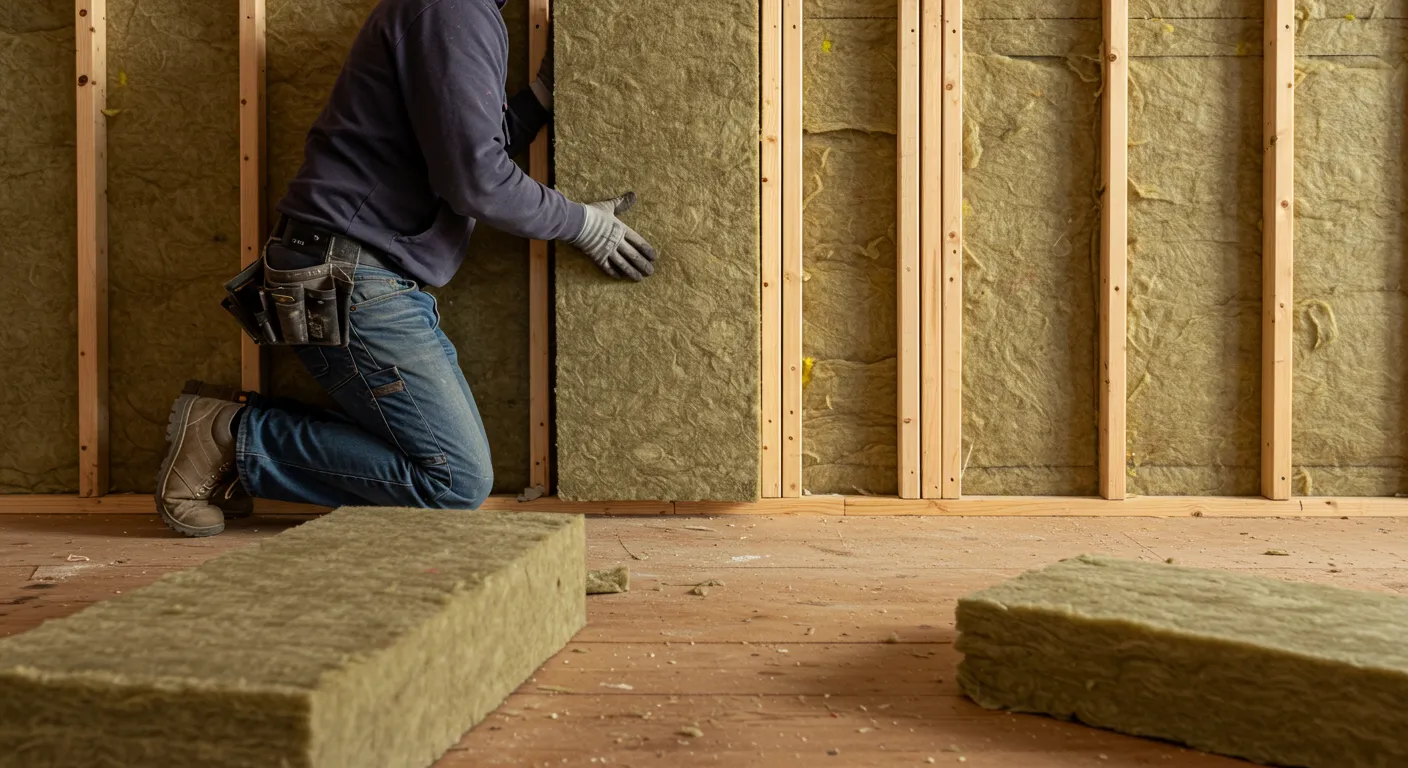
Selecting the right fiberglass batt insulation involves more than just picking a random thickness. R-values determine insulation effectiveness, influencing energy efficiency and indoor comfort. Understanding these values helps homeowners and contractors make informed decisions that align with building codes and energy-saving goals.
R-value measures the thermal resistance of insulation materials. A higher R-value means better resistance to heat flow, improving energy efficiency. Factors influencing R-values include material composition, density, and thickness. Fiberglass batt insulation is widely used due to its cost-effectiveness and availability in multiple R-values.
Fiberglass batt insulation is manufactured in varying thicknesses, each corresponding to a specific R-value. Understanding these thicknesses ensures proper selection for walls, attics, basements, and floors.
| R-Value | Thickness (inches) | Common Applications |
| R-11 | 3.5 | Interior walls, floors |
| R-13 | 3.5 | Exterior walls (2×4 studs) |
| R-19 | 6.25 | Exterior walls (2×6 studs) |
| R-30 | 9.5 | Attics, ceilings |
| R-38 | 12 | Attics in colder climates |
| R-49 | 14-16 | High-performance attic insulation |
Selecting the right thickness depends on climate, local energy codes, and structural design.
Climate zones significantly impact the recommended R-value. Warmer regions require lower R-values, while colder climates need higher R-values to prevent heat loss.
Using the appropriate R-value improves energy savings, preventing unnecessary heat loss or gain.
Local building codes specify minimum R-value requirements for insulation. The International Energy Conservation Code (IECC) provides guidelines based on climate zones. Failing to meet these requirements may lead to energy inefficiency and non-compliance penalties.
Checking state and local codes before purchasing insulation ensures compliance and avoids unnecessary rework.
While thickness and R-value are crucial, other factors influence fiberglass batt performance:
Making an informed choice involves considering multiple factors:
Ensuring insulation is correctly installed optimizes energy savings. Key steps include:
Looking for expert guidance? On the Mark Spray Foam Insulation provides professional insulation solutions to help you achieve the best energy efficiency. Call (813) 921-0444 or email info@onthemarksprayfoam.net to discuss your insulation needs.
Choosing the right fiberglass batt thickness ensures energy efficiency, comfort, and compliance with building codes. Understanding R-values and considering factors like climate, moisture control, and installation quality leads to better performance. For professional guidance on selecting and installing the best insulation, contact On the Mark Spray Foam Insulation at (813) 921-0444 or info@onthemarksprayfoam.net.
Using a lower R-value can lead to higher energy bills, uneven temperatures, and reduced indoor comfort. It may also violate building codes in some areas.
Not necessarily. While increasing thickness raises R-value, space constraints and diminishing returns make excessive thickness impractical in some cases.
Yes, layering batts can improve insulation, but proper installation is crucial to prevent compression and gaps that reduce effectiveness.
Moisture reduces R-value and can lead to mold growth. Using faced batts or adding vapor barriers helps control moisture issues.
Faced insulation has a vapor barrier attached, helping control moisture. Unfaced batts lack this barrier and are typically used in interior walls or areas with separate moisture control methods.
Fiberglass insulation can last 50+ years when properly installed and maintained. Avoiding moisture exposure and mechanical damage extends its lifespan.
Unlike loose-fill insulation, fiberglass batts do not significantly settle when correctly installed. However, improper installation may lead to shifting and performance loss.
Yes, but they should be installed with a vapor barrier and proper ventilation to prevent moisture buildup.
Fiberglass is naturally non-combustible, but paper-faced versions can be flammable. Always check fire ratings when selecting insulation.
Signs like increased energy bills, drafts, uneven temperatures, or visible damage (mold, pests, or moisture) indicate that insulation may need replacement.